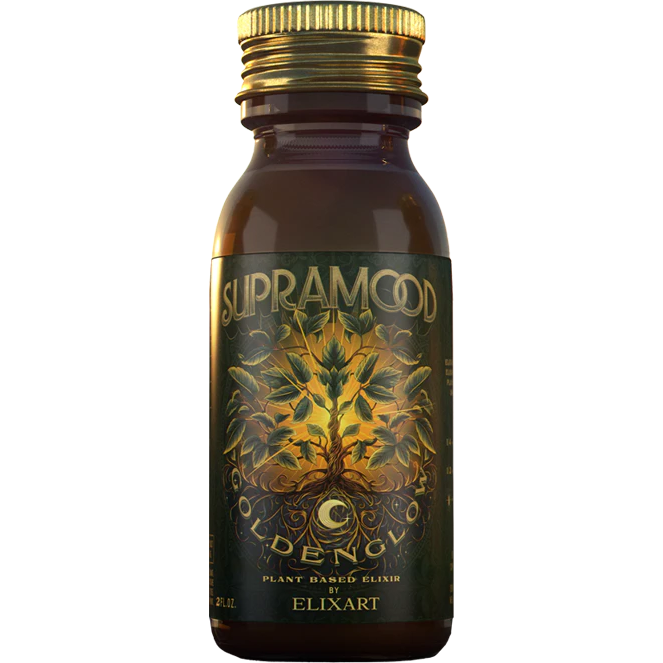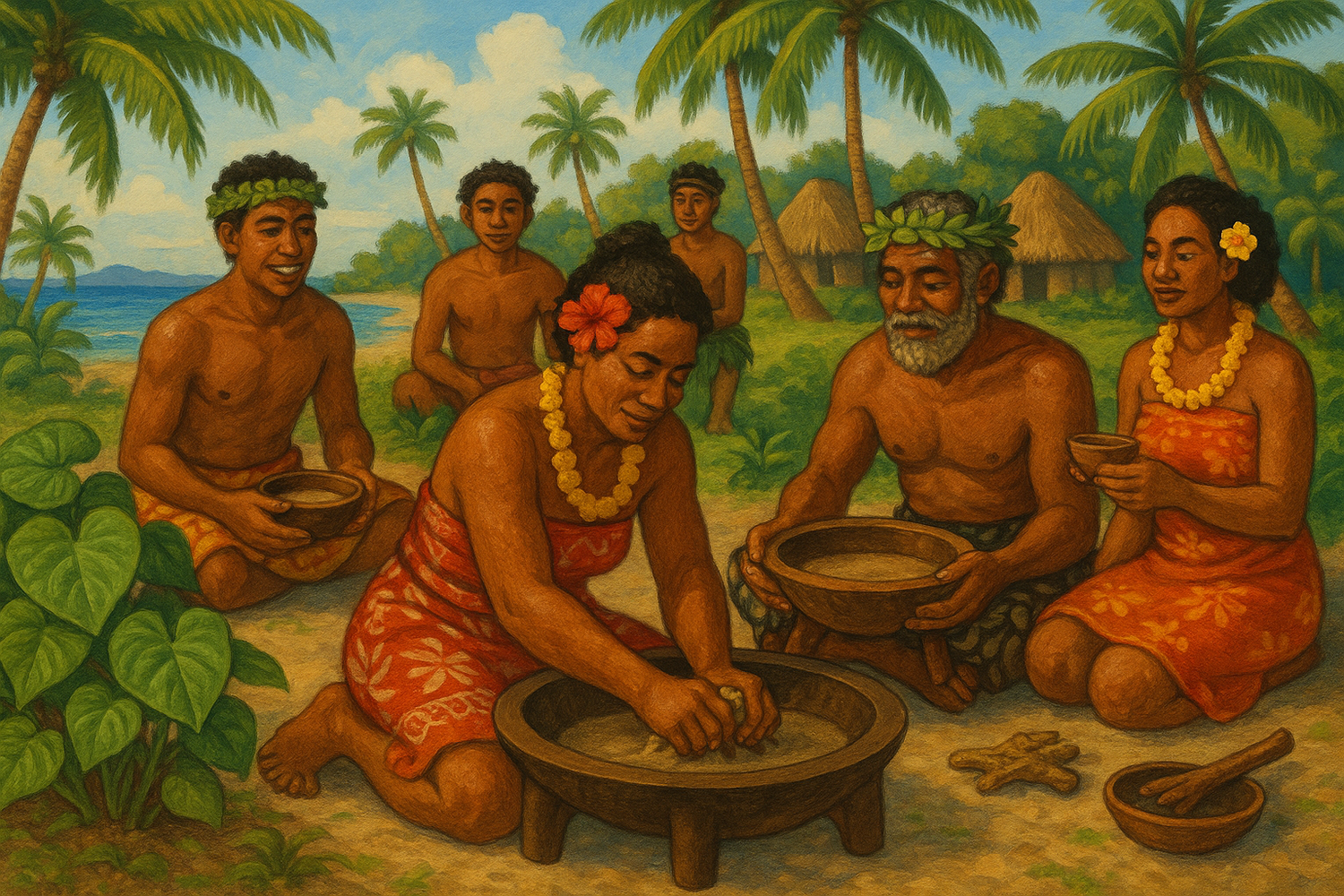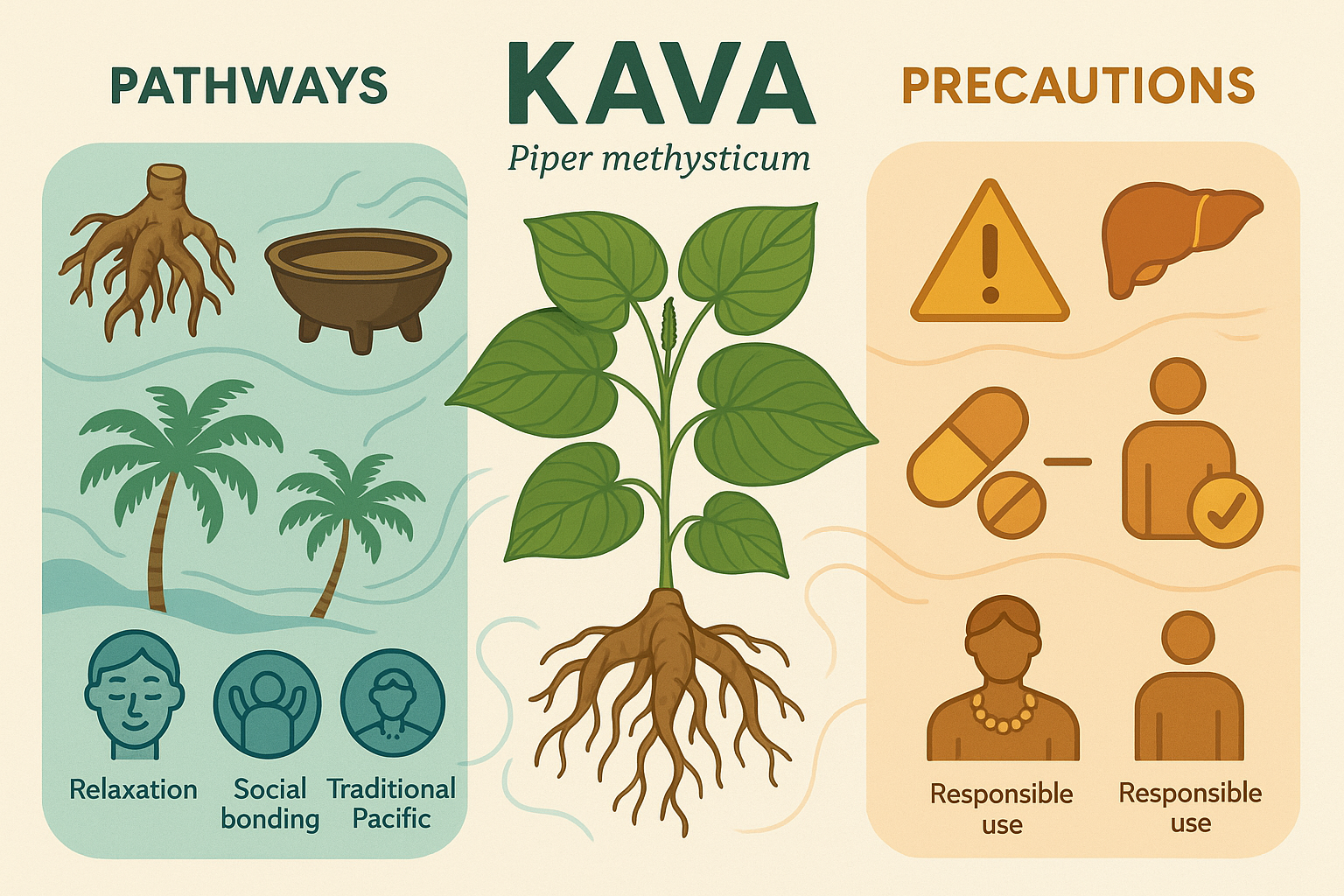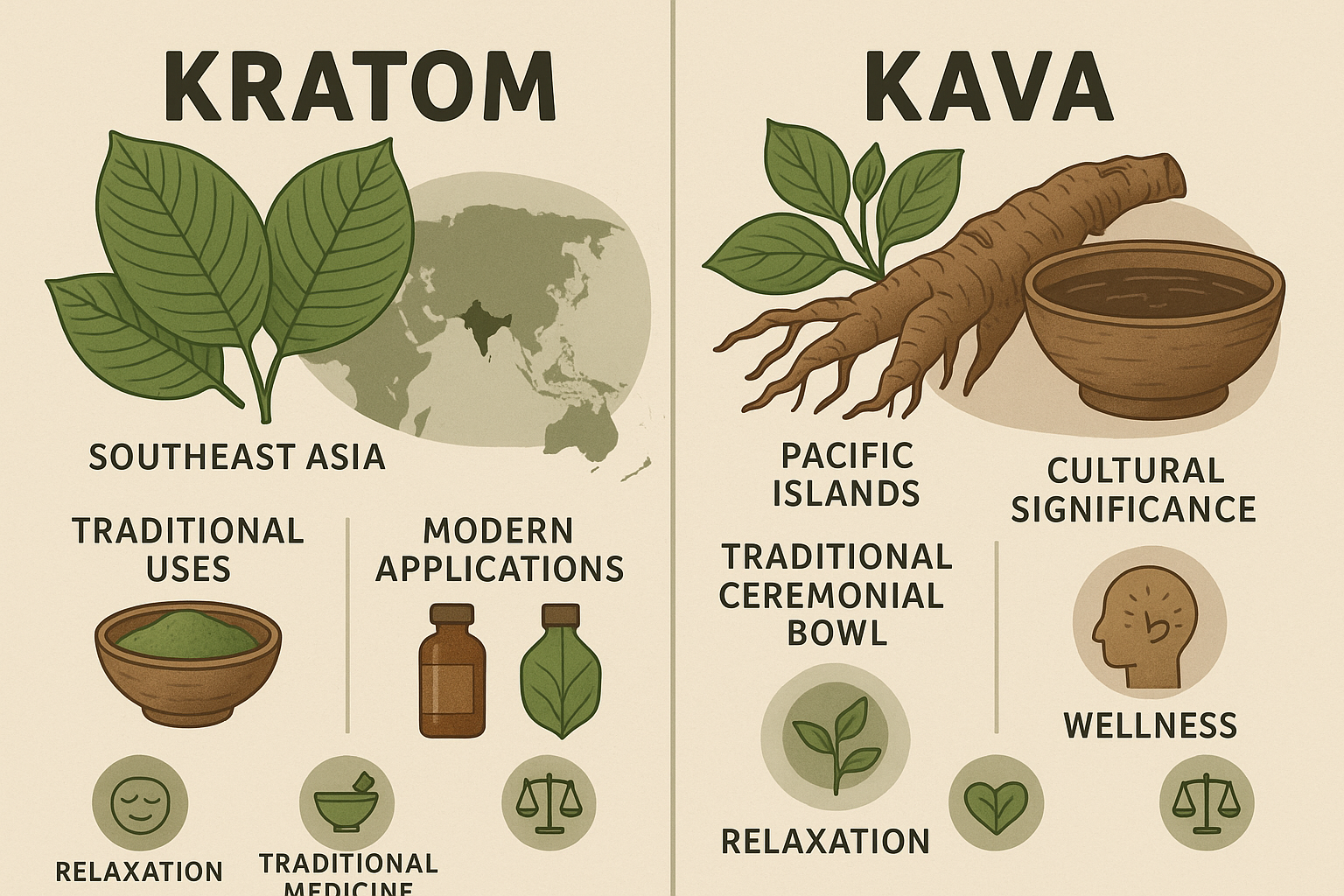Imagine attending a lively gathering in Pohnpei, where the rhythm of traditional chanting and the pounding of fresh kava roots set the atmosphere. This unique moment brings to life the vibrant culture of Micronesia, where Sakau is not just a drink but a way of life. Join me as we explore what makes Sakau distinct from its kava cousins and the role it plays in the local community.
What is Sakau?
Understanding Sakau
Sakau is a term that holds a beautiful dual meaning. It refers to both the kava plant and the beverage made from it. In Micronesia, drinking Sakau is a central part of life. It’s not just about consumption; it’s about community, tradition, and culture.
Different cultures have their own versions of kava. For example, in Vanuatu, it’s simply called kava, while in Fiji, it’s known as Yangona. Each region has its unique practices surrounding kava consumption. However, in Micronesia, the process is different—and fascinating.
The Role of Hibiscus Bark
One standout feature of Sakau preparation is the use of hibiscus bark. This bark acts as a filter during the straining process. It’s more than just a tool; it changes everything!
- The bark contains properties that enhance the drink’s effects.
- Local drinkers claim it makes the beverage “stronger” with a unique body sensation.
"It's what makes our Sakau, Sakau," - Salpasr Ayuyu
For those unfamiliar, kavalactones are the active compounds found in kava. They contribute to the relaxing effects of the drink. On average, a serving of Sakau contains about 500mg of kavalactones. However, locals in Pohnpei might consume over 4,000mg in a single sitting. That’s a significant amount!
The Uniqueness of Sakau Culture
Sakau preparation involves a rhythmic ritual. The fresh roots are pounded on flat basalt stones, producing a bell-like sound. This process isn’t just about making a drink; it’s an event! Friends gather, songs are sung, and traditions are shared. It’s a celebration.
The incorporation of hibiscus during preparation distinguishes Micronesian Sakau from other kava traditions. The unique elements—both cultural and botanical—have made Sakau an integral part of Pohnpean identity. It’s not merely a drink. It’s a cultural legacy, shared across generations.
So, whether you’re looking to experience Sakau yourself or to understand this beautiful tradition, it’s clear that Sakau is more than meets the eye. It’s a vibrant part of life in Micronesia, inviting everyone to feel its powerful effects. Want to discover more about kava and its benefits? Check out the GoldenGlow Elixir.
The Strong Effects of Sakau
Understanding Sakau and Its Potency
Sakau, a treasured beverage in Pohnpei, Micronesia, is made from the roots of the kava plant. What makes it truly potent is the method of preparation. Unlike many places where kava is mixed simply with water, Pohnpeans follow a unique process. They use fresh roots and very little water. This results in a thicker and stronger drink. The famous quote from an anonymous drinker says it all:
"There’s something about the rhythm of pounding that makes the drink taste better."
Hibiscus: A Key Ingredient
Have you ever wondered what contributes to the unique buzz of Sakau? The answer lies in the hibiscus bark used during preparation. The roots are strained through this special bark, which brings about additional effects. It's not just a filler—hibiscus has anti-inflammatory and pain-killing properties that enhance your experience. As one local drinker described,
"The harmony of singing elevates the experience."
This musicality, combined with the hibiscus, makes drinking Sakau a vibrant social ritual.
Consumption Patterns
So, how much Sakau are locals really drinking? It’s estimated that an average male drinker might consume around 8 servings over a span of 5.5 hours! That’s a whole lot of Sakau! This communal activity is not just about drinking; it’s about coming together, sharing stories, and bonding over this special beverage.
A Personal Experience
The first time I experienced Sakau, it was nothing short of magical. I remember sitting in a circle of friends, the rhythmic pounding of the roots echoing around us. The air was filled with laughter and traditional songs. Finally, as I took my first sip, I felt a warmth spreading through me. Just as I had heard, the experience of drinking Sakau is something special—enhanced by the hibiscus and the company's joy.
The Importance of Freshness
Freshness plays a significant role in the strength of Sakau. Locals almost always opt for fresh roots over powdered kava. This commitment to quality means you get a vibrant drink packed with flavor and potency. Have you ever tried fresh kava? The difference is like night and day.
Ready to explore more about kava? Check out this amazing elixir to enhance your kava experiences!
Varieties of Sakau in Micronesia
When it comes to the world of Sakau in Micronesia, two varieties stand out: Rahmwanger and Rhamadel. Both play a vital role in the culture and lifestyle of the Pohnpean people. Let’s dive into a brief overview of these fascinating varieties.
1. Overview of Rahmwanger and Rhamadel
- Rahmwanger: This is the more widely consumed variety, making up about 90% of the kava drunk in Micronesia. It features a robust green hue and is known for its strong flavor and effects.
- Rhamadel: In contrast, this variety is paler green with a smoother texture. It is often reserved for special occasions and significant gatherings, commonly enjoyed by local chiefs.
2. Characteristics and Uses
Rahmwanger is appreciated for its hefty buzz. People often drink it during casual social settings. Its robust flavor and potency make it a beloved choice among locals. Meanwhile, Rhamadel, being more rare, brings a unique experience. Imagine sipping this during a ceremonial occasion, surrounded by community members. It adds a layer of significance to the event.
3. Cultural Significance of Rhamadel
In Micronesian culture, Rhamadel is treasured. It’s not just a drink—it's a symbol of respect and tradition. Using Rhamadel during gatherings reinforces social bonds. As a kava farmer once said,
“Each variety holds a story of its own.”
Isn’t it intriguing how a drink can weave through the fabric of society?
4. Comparison to Other Regions' Kava Varieties
Micronesia showcases a limited selection of kava types. During your research, you may find that other regions, like Fiji and Vanuatu, have more diverse varieties. In Fiji, for instance, kava is often enjoyed in a lighter, fluffier drink. Contrasting these differences helps highlight the uniqueness of Sakau and showcases the cultural applications in each region.
When comparing these varieties, think about how the cultivators and drinkers maintain these traditions. The cultural practices impact variety preference immensely. If you're curious about diving deeper into this world, check out Supramood's offerings. With a deep-rooted commitment to quality, their products could greatly enhance your understanding of these fascinating kava varieties.
The Cultural Roots of Sakau
Sakau, known as kava in many places, holds deep cultural significance in Pohnpei, Micronesia. But where does it actually come from? To understand Sakau fully, you must explore its origins, connections, and present-day relevance.
1. Origins of Sakau
Studies suggest that the origins of Sakau can be traced back to Manus Island in Papua New Guinea. It’s fascinating how a plant can cross continents. Genetic evidence shows that the varieties found in Micronesia were likely introduced much later than others in the Pacific region. This cultural shift enriches the history of Sakau, creating a unique blend of traditions.
2. Connection to the Admiralty Islands
Why should we care about the Admiralty Islands? Well, they provide critical insights into the genetic makeup of Sakau. The close ties between Micronesia and this region shed light on how kava drinking practices evolved over time. The Pohnpean term "Sakau" reportedly comes from the Manus word "Kau," emphasizing a shared heritage.
3. Hawaiian Influence
The influence of Hawaii is another layer worth discussing. Sakau has absorbed elements from various cultures, including Hawaiian kava traditions. The way it's consumed, the rituals surrounding it, and even local kava bars reflect this blend. Have you ever visited a kava bar? It’s a unique experience that brings people together.
4. Local Kava Bars
The significance of local kava bars cannot be overstated. They serve not only as places for socializing but also as spaces to honor tradition. These bars are where ancient practices meet contemporary culture, allowing you to savor the flavors of Sakau in a communal setting.
Here’s a summary of what we’ve discussed:
Study
Findings
|
Genetic Studies |
Indicate potential origins from Manus Island, Papua New Guinea. |
"Understanding our past shapes how we enjoy Sakau today." - Local historian
As you delve into the rich tapestry of Sakau’s culture, consider this: The Pohnpean term 'Sakau' reflects a meaningful connection to its roots, inviting you to be a part of this vibrant story.
If you’re intrigued by the depths of kava culture and are looking for a taste of this heritage, consider exploring products that can provide a genuine experience, like Supramood’s GoldenGlow Elixir.
Impact on Health and Wellness
Have you ever wondered how herbal drinks like Sakau can affect health? Many people in Micronesia drink Sakau, which derives from the kava root. This beverage is more than a casual drink; it has deep cultural significance and various health benefits.
Health Benefits of Sakau
- Anti-inflammatory properties: One key component of Sakau is hibiscus bark. This ingredient is known for its anti-inflammatory and analgesic properties. It can help with various conditions such as pain and swelling.
- Kavalactones: These compounds are responsible for Sakau’s potential mental health benefits. They can promote relaxation and reduce anxiety. It’s fascinating to think that something as simple as a drink can influence mood, right?
Comparative Analysis: Sakau vs. Other Herbal Products
When comparing Sakau to other herbal solutions, it's essential to consider their unique effects. While many herbal drinks focus solely on their flavor or immediate effects, Sakau offers a fuller experience due to the hibiscus component. Other herbs may provide benefits, but few blend multiple health advantages like Sakau does. The buzz accompanying Sakau is often described as a warm, encompassing sensation, unlike the quick pick-me-ups of some herbal teas.
A Personal Journey with Sakau
Let me share a personal story. A friend of mine began drinking Sakau regularly. He noted a significant improvement in his stress levels. After a long day, he found that enjoying Sakau helped him unwind and feel more at peace. The calming sensation it provided was like nothing he had experienced with other herbal drinks. He said it became a ritual for relaxation at the end of his busy week.
Concerns Regarding Excessive Consumption
However, it’s essential to consider potential downsides too. Overindulging in Sakau can lead to various complications, such as digestive issues and dizziness. Similar to any herbal remedy, moderation is crucial. Listening to your body is always a wise approach.
"The healing qualities of kava have been recognized for generations." - Herbalist
While many enjoy Sakau for its cultural significance, its health implications are being explored further. Research shows mixed results regarding its risks and benefits. As you consider incorporating Sakau into your health routine, remember that it can be a wonderful addition, but keep in mind the potential downsides.
If you're curious to try this powerful beverage, check out the GoldenGlow Elixir. It offers a unique blend drawing from the traditions and benefits of Sakau and can help elevate your wellness journey.
TL;DR: Sakau, a potent version of kava, is a key part of daily life in Pohnpei, with its unique preparation and cultural significance setting it apart from other kava varieties.







Leave a comment
This site is protected by hCaptcha and the hCaptcha Privacy Policy and Terms of Service apply.